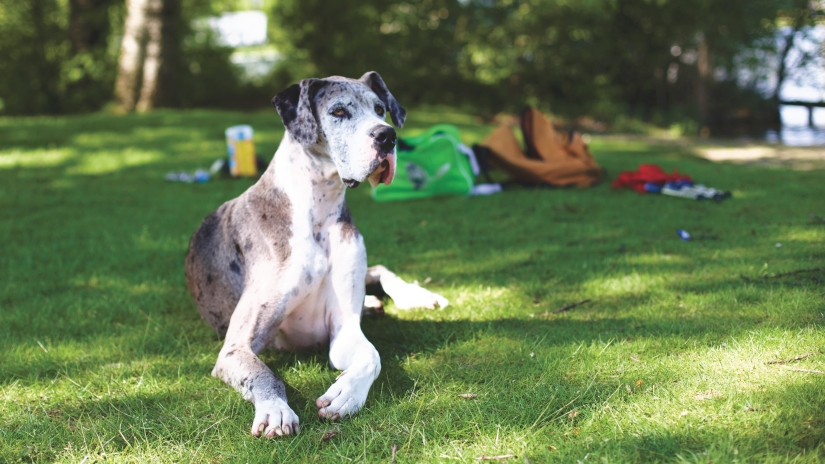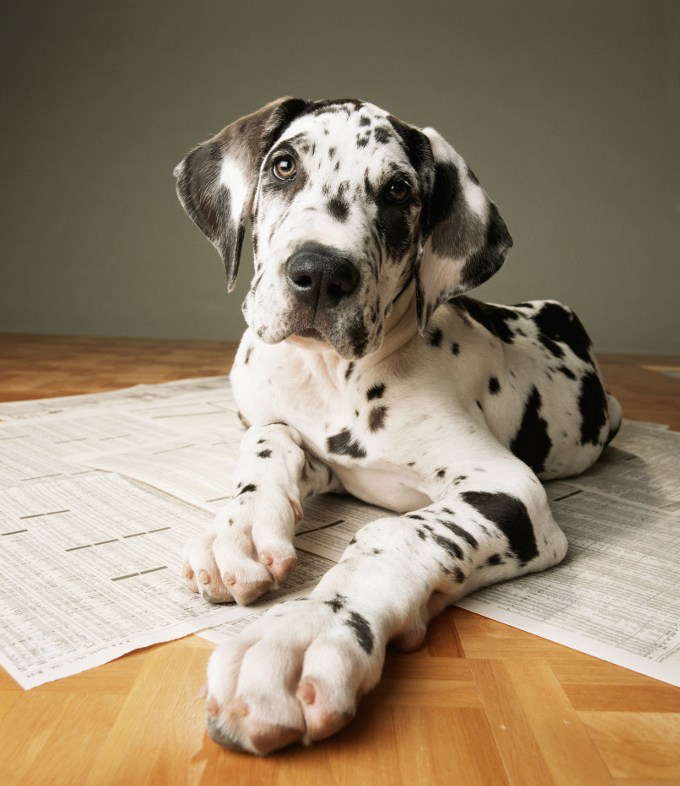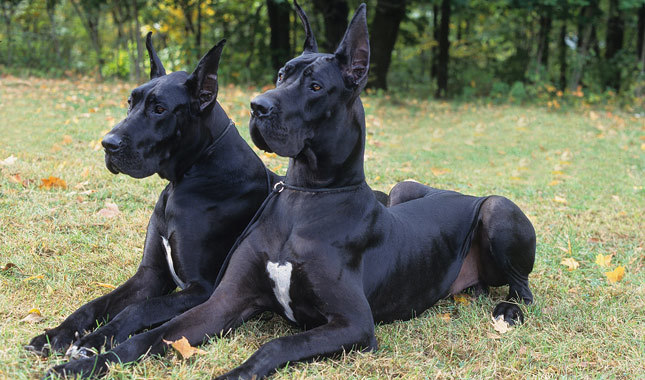Hello, friends!
Today I would like to start a series called “Breed Introduction” where each post will allow you to meet a different breed. Many of us like certain breeds based on their appearance but aren’t sure if they are the right dog for us. These posts should help you find the perfect dog for your family. Today we’ll be introducing the Great Dane which is my personal favorite.

The Great Dane is one of the biggest breeds in the world, adult males weigh up to 90 kilograms! That’s more than a typical grown man! Of course, not all great danes are as heavy, females weigh between 45-60 kg and males from 55-99kg. Their height ranges between 70 and 90cm and their life span usually reaches 10 years. Sadly these amazing creatures are prone to gastric torsion, hip dysplasia, and rheumatism based on their anatomy, which means we might have to run to the ER and hope for the best.
Great Danes are also known as the Apollo of Dogs and Gentle Giants. The German name of the breed is Deutsche Dogge or German Mastiff. Just like their nickname says, they are gentle dogs often seeking physical affection with their owners. They’re usually good with other dogs, families and other noncanine pets. However, if not properly socialized, a Great Dane may become fearful or aggressive towards new stimuli, such as strangers and new environments. It’s best to train with an expert from the early stages to eliminate unwanted behaviors in the future.
The next thing you should now is the variety of coats!
Fawn and brindle
- Fawn: The color is yellow gold with a black mask. Black should appear on the eye rims and eyebrows and may appear on the ears.
- Brindle: The color is fawn and black in a chevron stripe pattern. Often, also, they are referred to as having a stripe pattern.
- Harlequin and black
- Black: The color is a glossy black. White markings on the chest and toes are not desirable and considered faults.
- Harlequin: The base color is pure white with black torn patches irregularly and well distributed over the entire body; a pure white neck is preferred. The black patches should never be large enough to give the appearance of a blanket, nor so small as to give a stippled or dappled effect. Eligible, but less desirable, are a few small gray patches (this gray is consistent with a merle marking) or a white base with single black hairs showing through, which tend to give a salt and pepper or dirty effect.
Gray merle (Grautiger) dogs are acceptable in conformation shows under the FCI as the gray merle dogs can produce correctly marked black/white harlequin dogs, depending on the combinations. The aim for deleting the colour gray merle as a disqualifying fault is to provide a wider gene pool. Their status is that they are “neither desirable nor to be disqualified”.Consequently, this color must never obtain the highest grading at dog shows. - Mantle – The color is black and white with a solid black blanket extending over the body; black skull with white muzzle; white blaze is optional; whole white collar preferred; a white chest; white on part or whole of forelegs and hind legs; white tipped black tail. A small white marking in the black blanket is acceptable, as is a break in the white collar.
- Blue: The color is a pure steel blue. White markings on the chest and toes are not desirable and considered faults.
Other colors occur occasionally, but are not acceptable for conformation showing, and they are not pursued by breeders who intend to breed show dogs. These colors include white, fawnequin, brindlequin, merle, merlequin, blue merle, chocolate and fawn mantle. The white Great Dane coloring is typically associated with vision and hearing impairment.

It’s easy to tell that these huge teddy bears aren’t cheap pets. Maintaining a healthy diet tends to be expensive based on the ammount of food they eat. They need a normal amount of exercise and plenty of love from their owners!
I hope this post helped you learn a little bit about the breed! What dog should we talk about next?

